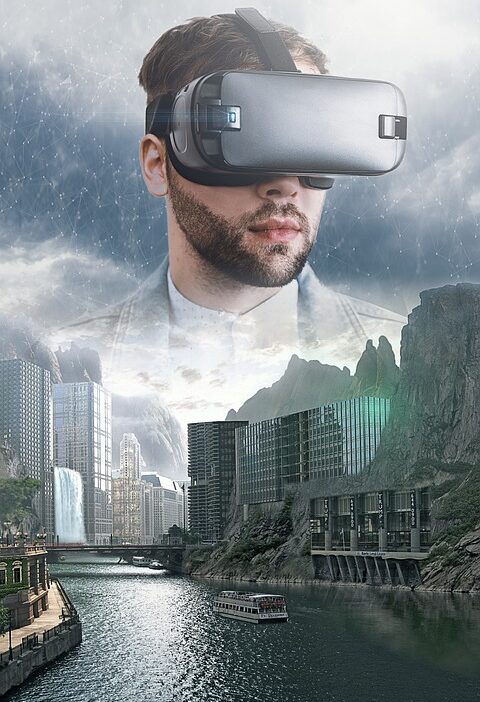Virtual Reality (VR) has been a concept of fascination for many decades, originally popularized in science fiction literature and film. The idea of immersing oneself in a digitally created environment, experiencing sensations and interactions that feel almost real, has transitioned from imaginative storytelling to groundbreaking technological innovation. In this article, we will explore the evolution of virtual reality technology, from its conceptual beginnings to its current state and future potential.
The Roots of Virtual Reality
The foundations of VR can be traced back to the 1960s when computer scientist Ivan Sutherland developed the first head-mounted display system. Dubbed the "Sword of Damocles," it was a crude contraption consisting of a helmet with video graphics that were tethered to a computer, allowing users to experience rudimentary 3D environments. However, the technology was far from practical and remained largely experimental.
By the 1980s and 1990s, interest in VR began to surge. Notable projects, like VPL Research, developed devices such as the DataGlove and EyePhone, which allowed users to manipulate virtual environments. Meanwhile, films such as "Tron" (1982) and "The Matrix" (1999) captivated audiences with their immersive depictions of virtual worlds, helping to popularize the concept of a digital alternate reality.
Technological Advances
The early 2000s marked a period of stagnation in VR technology, often referred to as the "VR winter," due to high costs and technological limitations. However, advancements in computing power, graphics rendering, and sensor technology began to pave the way for a VR renaissance.
Breakthroughs in Hardware
The introduction of powerful gaming consoles and graphics cards—like Nvidia’s GeForce series—allowed for the rendering of much more complex and detailed environments. Furthermore, the emergence of smartphones and mobile computing created opportunities for more accessible VR experiences.
In 2012, Palmer Luckey’s Oculus Rift Kickstarter campaign reignited interest in VR. Oculus set a new standard for immersive gaming with its 1080p display, low latency tracking, and affordable pricing. This sparked a wave of innovation, with major gaming companies like Sony (with PlayStation VR) and Valve (with HTC Vive) entering the market, leading to the development of high-quality VR headsets.
Software and Content Development
As hardware improved, so did the software. Developers started creating immersive experiences across various fields, from gaming to education, healthcare, real estate, and training simulations. A standout example is "Beat Saber," a VR rhythm game that became a cultural phenomenon, demonstrating VR’s potential beyond traditional gaming.
Educational institutions began employing VR for training and simulations. For instance, the medical field adopted VR for surgical simulations, allowing students to practice complex procedures in a controlled environment without risk to patients.
Current Landscape
Today, VR technology is more advanced and widely available than ever. Headsets like the Oculus Quest series allow users to experience VR without a computer or external sensors, a significant leap toward widespread adoption. The hardware is becoming increasingly affordable, and the software ecosystem continues to expand.
Industries are harnessing VR for various applications. In architecture and design, clients can take virtual tours of buildings before they are constructed. In therapy, VR is being used to treat conditions such as PTSD and phobias by allowing patients to face their fears in a safe, controlled setting.
The Future of Virtual Reality
Looking ahead, the future of VR is promising and multifaceted. As technology advances, we can expect more realistic haptic feedback devices, eye-tracking capabilities, and augmented reality (AR) integration, leading to mixed-reality experiences that blur the lines between physical and digital worlds.
Furthermore, as 5G networks become more widespread, VR will become even more accessible, enabling remote users to seamlessly connect in shared virtual spaces. This could revolutionize online collaboration in work environments, creating immersive meetings and brainstorming sessions where geographical barriers no longer exist.
Challenges Ahead
Despite its potential, VR technology faces challenges such as motion sickness for some users, the need for more social interaction within virtual environments, and ethical concerns regarding data privacy and psychological impacts. Addressing these challenges will be essential for the technology’s growth and acceptance in everyday life.
Conclusion
From its early beginnings in science fiction to its current applications, virtual reality is no longer just a concept of the future; it is a present-day reality with transformative potential. As we continue to innovate and explore the possibilities of VR, we unlock new ways to learn, create, and interact with the world around us, shaping the future of human experience in ways we are only beginning to understand. The journey from imagination to reality is ongoing, and the best may still be yet to come.



